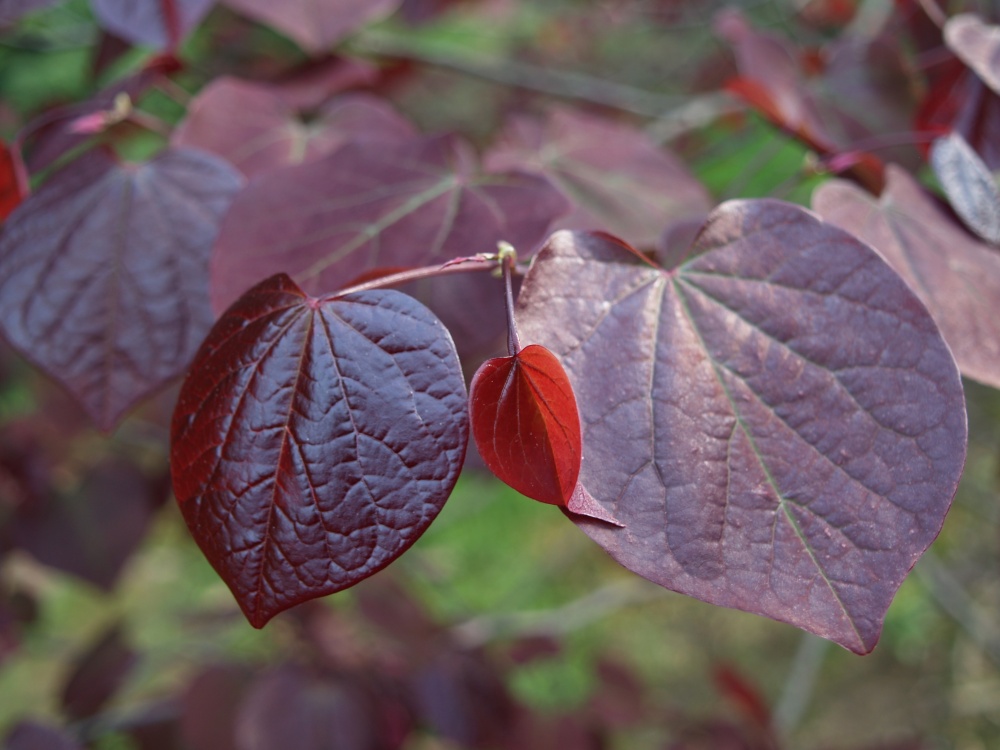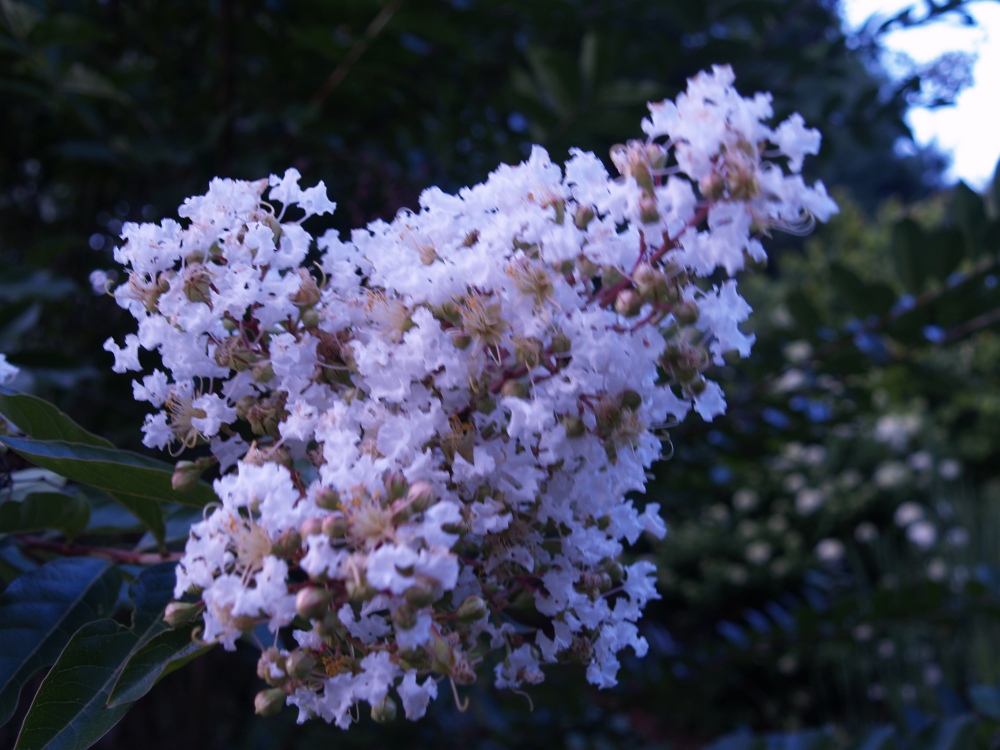The dead magnolia (Magnolia grandiflora ‘Alta’) at the rear of the garden must finally be chopped out. The tree died in last winter’s cold, and for a few months into the spring I hesitated, hoping that this was only damaged foliage from the cold and nothing more serious. The bark on a tree that has died will often remain green for months, fading in color slowly as the life drains away, and this was the case with the magnolia so that I was uncertain of its health until late in spring.

Now, I’ve grown tired of the hulking corpse which still carries many brown leaves, though most have fallen into the small wet weather pond just behind the tree. In fact, there are two dead magnolias at the rear of the garden, about sixty feet apart. The other (‘Brackens Brown Beauty’), which has one live branch near the base of a tree twenty feet tall, can be seen from a certain angle from the neighbor’s veggie garden, but otherwise neither dead tree can be seen by anyone but me. So, I have felt no obligation to remove either tree until I was properly motivated, and now that it is winter again it seems appropriate that the trees should be removed before spring.
A third magnolia (‘Greenback’, that should have been the least cold hardy of the three cultivars) survived with hardly a brown leaf, and a fourth in the front garden (a second ‘Brackens’) also fared well despite the cold. Go figure.

The magnolia along the border of the property will not be replaced, I expect. To one side there is a grouping of Japanese cedars (Cryptomeria japonica) that have grown quite tall, and to the other on the neighbor’s property there are two large bald cypresses (Taxodium distichium). So, the space is filled already without the magnolia, and in a few years it will hardly be missed.
I’ve begun considering what to do with the area where the more prominent magnolia was planted beside the dirt bottomed pond. The pond was constructed in an attempt to dry the surrounding soil, that was becoming increasingly moist, and even after the pond was dug didn’t become any drier so that several neighboring shrubs died in the dampness. The magnolia was not obviously bothered by the moisture, but perhaps some combination of stress from the wet soil and abnormal cold did it in.

I will not bother to dig out the roots, but will cut the tree at the base to allow the roots to decay in place. This limits so that another tree cannot be planted in its place, but now there is a redbud (Cercis canadensis ‘Forest Pansy’) to one side, and a blackgum (Nyssa sylvatica) to the other so that another tree will not be needed.
Though the pond is hardly ornamental, with a dirt bottom and being filled with muddy water only parts of the year, it seems not so bad an idea to leave a section open so that it can be viewed. There is a fine speciman ‘Natchez’ crapemyrtle (Lagerstroemia ‘Natchez’) to the back side, and I’m thinking that I could plant a lotus (Nelumbo) or two at the edge of the pond.

Probably, the lotus will grow (quickly) to fill the pond, but since the effort to dry the surrounding soil was unsuccessful, the pond has served as a settling chamber for rainwater that flows through the edge of the garden into the wetland meadow beyond. While the wetland’s mishmash of brambles and cattails is likely to do an adequate job filtering the drainage before it reaches the larger pond and overflow into the creek below, the lotus will further serve this purpose. And, instead of brown magnolia leaves, there will be large and lush lotus leaves and blooms.
I’m looking forward to seeing some pics of your blooming lotus next summer! Although you reference the earth bottomed pond in the rear of the garden often, i’m not sure if you’ve ever shared a picture of it.
it is very comforting to hear about your garden’s trials and tribulations, as it makes me feel better about the many setbacks i’ve experienced in my own. thanks for sharing.
The mud hole has not been much to look at, but once the magnolia is removed the view from the garden will open up. Lotus will dress it up, and is likely to fill the pond quickly. Then, photos will be appropriate. I keep photo evidence of my disasters to a minimum.